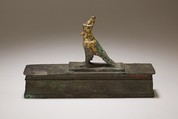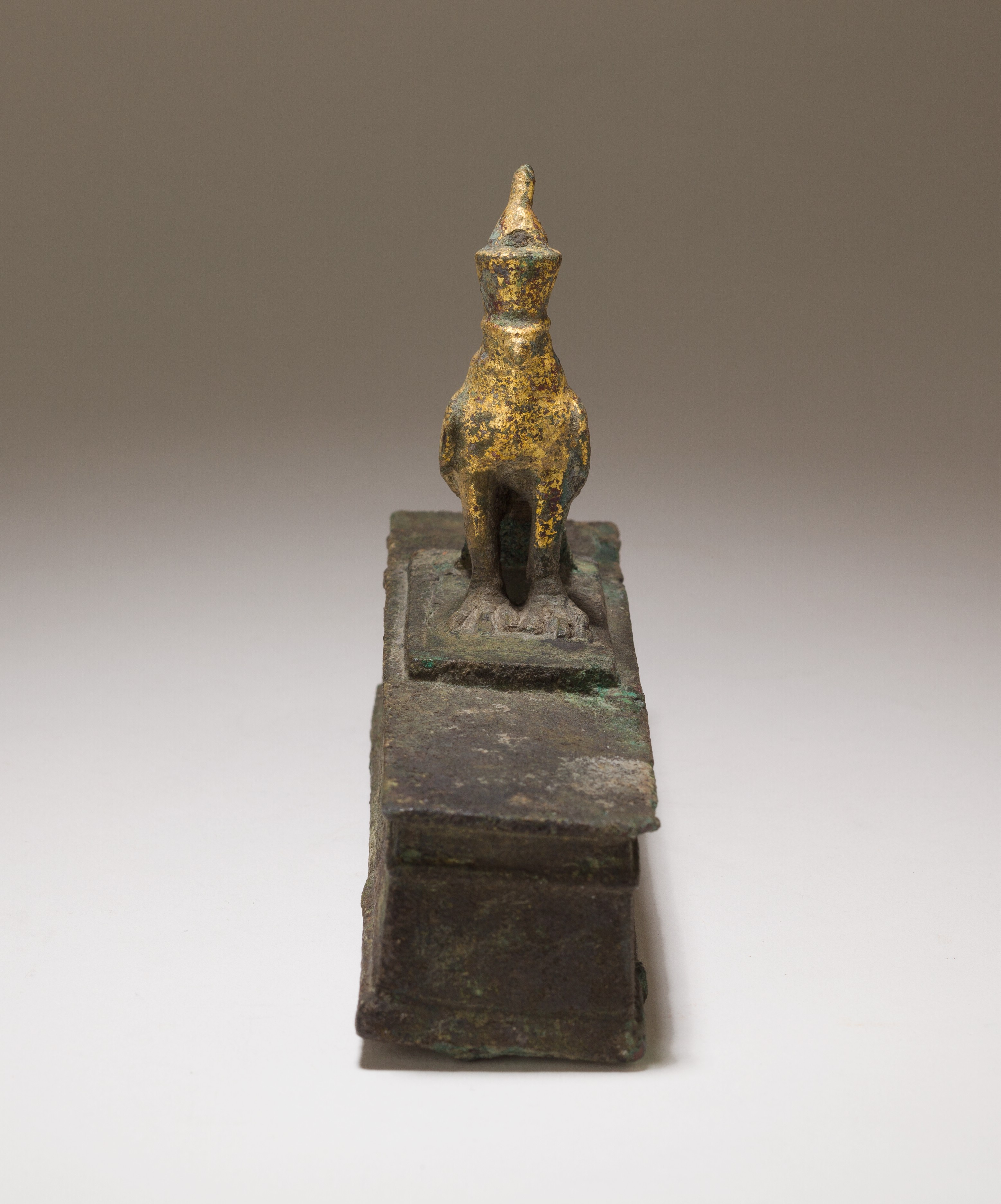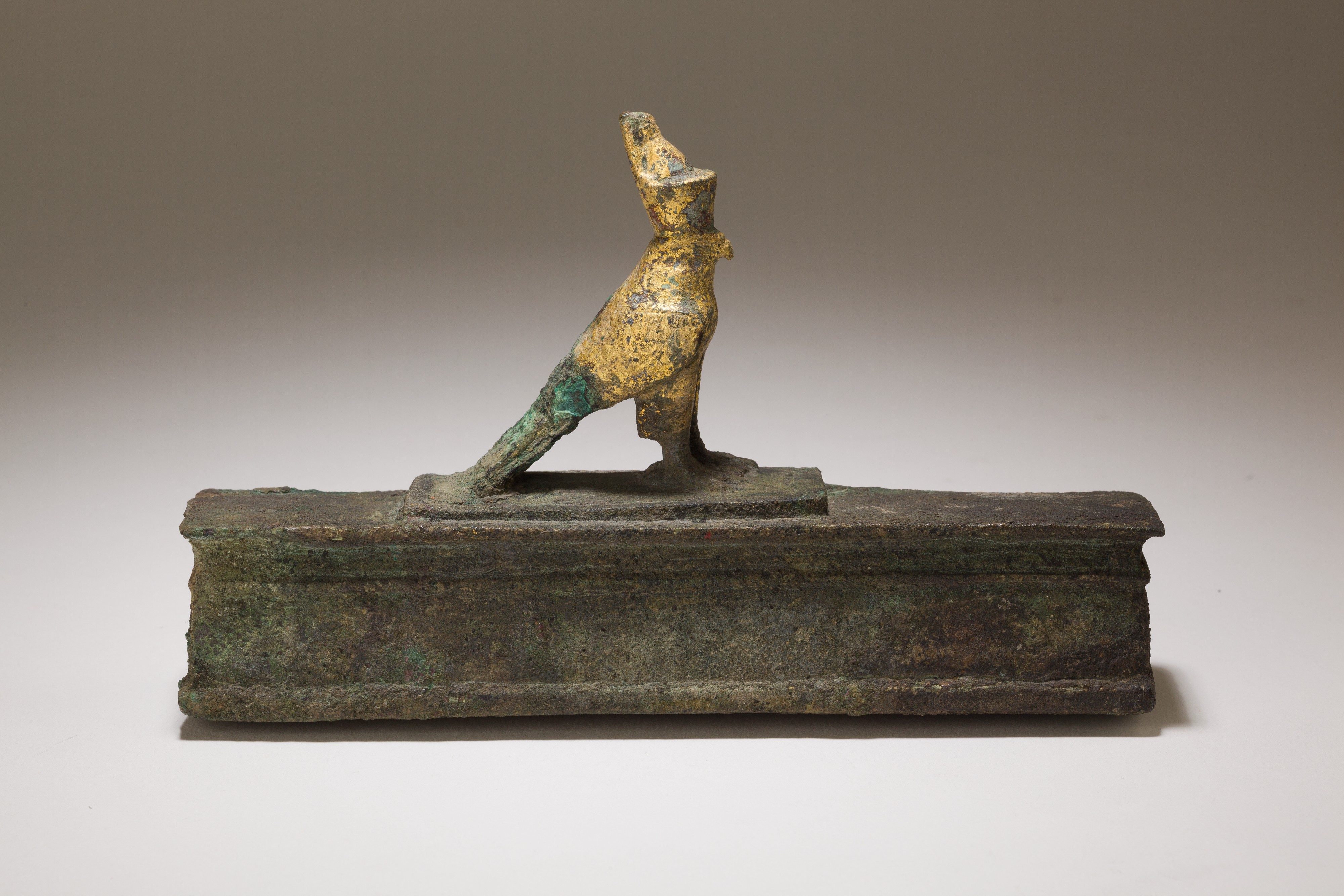Falcon in double crown surmounting a shrine shaped box for an animal mummy
Late Period–Ptolemaic Period
Not on view
The falcon god Horus stands with his wings swept back. He wears the double crown of Egypt, a royal crown that symbolizes the union of Lower and Upper Egypt, and highlights Horus’ role as the legitimate ruler of the entire land. The crown’s elements are distinct and well made: the red crown of Lower Egypt, lacking only its curling spiral at the front, and the white crown of Upper Egypt. The falcon wears the double crown because Horus and the concept of kingship were closely tied, as early as the Predynastic Period. The falcon is gilded and the bright gold color communicates its shining, luminous divine nature. Cupreous metal statuettes of gods were frequently gilded, but the gilding easily wears over time. This rare survival is representative of a much larger category of material, and shows how donors invested in costly materials even for small-scale statuettes.
The falcon stands on a rectangular, shrine-shaped box that would have held an animal mummy. The falcon and box were fashioned separately. The falcon stands on a rectangular base, now joined with the top of the box. Such falcon mummy boxes, or sarcophagi, would have been offered for deposition in animal necropoleis, not just in relation to the cult of Horus, but also more broadly in association with solar cult.
Due to rights restrictions, this image cannot be enlarged, viewed at full screen, or downloaded.
This artwork is meant to be viewed from right to left. Scroll left to view more.





